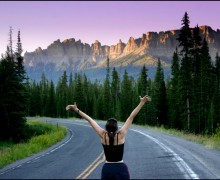The world of online casino gaming offers countless entertainment opportunities, but few games capture the imagination quite like blackjack. Unlike purely chance-based games, blackjack online presents players with decisions that can genuinely impact their success. However, there’s a crucial distinction between online blackjack and live blackjack that every player should understand.
In traditional online blackjack games, random number generators (RNGs) create completely independent outcomes for each hand. Every card dealt is entirely random, making it impossible for players to influence future results through observation or memory. Conversely, live dealer blackjack involves real cards dealt from physical decks, creating a finite pool of cards that changes as the game progresses. This fundamental difference explains why many online casino platforms require different wagering contributions for bonus terms and conditions—live games typically contribute less to wagering requirements because players retain some theoretical control over outcomes through strategy and observation.

The Role of Probability in Blackjack
Mathematics forms the backbone of every successful blackjack strategy. Whether you’re playing at CasinoLuck online casino or any other reputable platform, understanding probability gives you a significant advantage over players who rely purely on intuition.
Why Blackjack Is Different from Other Casino Games?
Unlike roulette or slot machines, blackjack requires active decision-making that directly affects your chances of winning. In games of pure chance, players simply place bets and hope for favourable outcomes. Blackjack, however, presents multiple decision points where mathematical knowledge can guide optimal choices.
The statistics speak for themselves: “The average house edge in blackjack is about 0.5% with basic strategy”, according to the Wizard of Odds, compared to approximately 2.7% in European roulette and 2-15% in slot machines. This dramatic difference occurs because blackjack allows skilled players to make informed decisions based on visible information—namely, the dealer’s upcard and their own hand total.
Core Mathematical Principles Behind Blackjack
Understanding bust probabilities forms the foundation of smart blackjack play. When you’re deciding whether to hit or stand, these mathematical certainties guide your choice:
| Player Hand Total |
Probability of Busting on Next Card |
| 11 or lower |
0% |
| 12 |
31% |
| 13 |
39% |
| 14 |
46% |
| 15 |
54% |
| 16 |
62% |
| 17 |
69% |
| 18 |
77% |
| 19 |
85% |
| 20 |
92% |
Expected value (EV) calculations take these probabilities further by considering potential payouts alongside bust risks. For instance, hitting on 16 against a dealer’s 10 upcard yields a negative EV, but standing yields an even more negative EV—making hitting the mathematically correct choice despite the high bust probability.
The Blackjack Strategy Chart — A Player’s Blueprint
Blackjack strategy charts represent decades of mathematical analysis condensed into easily digestible visual formats. These charts eliminate guesswork by providing optimal decisions for every possible hand combination.
What does a Blackjack Chart show?
Blackjack charts use a simple grid format where rows represent your hand totals and columns show the dealer’s upcard. Each intersection contains the mathematically optimal decision: hit, stand, double down, or split. This systematic approach ensures consistency in decision-making, removing emotional impulses that often lead to costly mistakes.
How to Use a Blackjack Strategy Chart in Practice?
Implementing a chart strategy requires memorisation and discipline. Key principles include:
- Always split Aces and 8s—Aces give you two chances at blackjack, while 8s transform a weak 16 into two potentially strong hands
- Never split 10s—A total of 20 is already an excellent hand that wins against most dealer outcomes
- Double down on 11 vs. dealer 6—This combination offers the highest expected value in blackjack
- Stand on hard 17 or higher—The bust risk becomes prohibitively high
- Hit soft hands (Ace-6 or lower)—The Ace’s flexibility allows safe improvement
Why Charts Reduce the House Edge but Don’t Eliminate It
Perfect blackjack counting cards strategy adherence reduces the house edge to approximately 0.5%, but several factors prevent complete elimination:
Rule variations significantly impact house edge. Games offering 3:2 blackjack payouts, dealer stands on soft 17, and doubling after splitting provide better odds than versions with 6:5 payouts or restrictive doubling rules. Additionally, the number of decks in play affects your chances—single-deck games typically offer superior odds compared to eight-deck shoes.
Card Counting: Strategy or Myth?
Counting cards in blackjack remains one of gambling’s most fascinating topics, blending mathematics, psychology, and legendary stories of triumph against impossible odds.
How Card Counting Works in Theory?
Card counting operates on a simple premise: high-value cards (10s, Jacks, Queens, Kings, Aces) benefit players, while low-value cards (2-6) favor the dealer. By tracking which cards have been dealt, skilled counters can determine when the remaining deck composition shifts in their favor.
The most common system, Hi-Lo counting, assigns values to each card:
- Cards 2-6: +1
- Cards 7-9: 0
- Cards 10-Ace: -1
Players maintain a “running count” by adding these values as cards appear. The “true count” divides this running total by the estimated number of remaining decks, providing a more accurate assessment of the deck’s favorability.
The History of Card Counting & MIT Blackjack Team
The MIT Blackjack Team‘s exploits in the 1980s and 1990s demonstrate card counting’s theoretical potential. According to BBC reporting, this group of students and graduates used sophisticated counting systems and team play to win millions from Las Vegas casinos. Their success relied on mathematical precision, extensive practice, and carefully coordinated strategies that maximized betting opportunities while minimizing detection risks.
Can Card Counting Beat the Casino Online?
Modern online blackjack counting cards faces insurmountable technological obstacles. RNG-based games shuffle the virtual deck after every hand, making count tracking impossible. Even live blackjack games employ countermeasures:
- Multiple decks (typically 6-8) dilute counting effectiveness
- Frequent reshuffling prevents deep deck penetration
- Continuous shuffling machines eliminate counting opportunities entirely
Regarding legality, is counting cards in blackjack illegal? The answer is nuanced: while card counting isn’t illegal, land-based casinos can refuse service to suspected counters. In online casino games, the question becomes irrelevant due to technological prevention measures.
Casino Online vs. Traditional Blackjack Tables
The digital revolution has transformed blackjack accessibility while maintaining the game’s mathematical foundations.
How Online Blackjack Operates?
Online casino blackjack comes in two primary formats. RNG-based versions use complex algorithms to simulate card randomness, ensuring each hand’s independence from previous results. Live dealer blackjack streams real dealers and cards from professional studios, combining online convenience with an authentic casino atmosphere.
Independent testing agencies like eCOGRA and iTech Labs regularly audit RNG systems to ensure fairness. These organisations verify that random number generation meets industry standards and produces genuinely unpredictable outcomes.
The Math of Online Casino Software
RNG algorithms employ sophisticated mathematical formulas to replicate true randomness. Modern systems use entropy sources—unpredictable inputs like mouse movements, keyboard timings, and system clock variations—to seed their calculations. This approach ensures that even with unlimited computational power, predicting future outcomes remains impossible.
Tools for Responsible Play in an Online Casino
Reputable casino online platforms provide numerous tools to promote responsible gambling:
- Deposit limits prevent excessive spending over specified timeframes
- Session time limits automatically log players out after predetermined periods
- Loss limits cap the amount players can lose during specific periods
- Reality checks display playing time and spending at regular intervals
- Self-exclusion options allow temporary or permanent account suspension
Breaking Down Blackjack Myths
Popular misconceptions about blackjack strategy can undermine even mathematically sound approaches.
The Gambler’s Fallacy Explained
The American Psychological Association defines gambler’s fallacy as the erroneous belief that past results affect future probabilities in independent events. In blackjack, this manifests as assumptions like “I’m due for a winning hand” or “The dealer can’t keep getting blackjack.” Each hand in RNG-based online blackjack is completely independent, making such reasoning mathematically invalid.
Misconceptions About Strategy Charts and Card Counting
Several persistent myths distort player expectations:
“Card counting guarantees profit”—Even perfect counting only shifts odds slightly in the player’s favour, and short-term variance can still produce substantial losses.
“Strategy charts always mean winning”—Charts minimise losses and maximise gains over extended play, but individual sessions can still end negatively.
“Blackjack is a luck-only game”—While luck influences short-term results, mathematical skill determines long-term outcomes for dedicated players.
The Psychology of Numbers in Blackjack
Understanding why players struggle with mathematical decision-making reveals important insights about human psychology and gambling behaviour.
Why Players Look for Patterns in Randomness?
Cognitive research demonstrates that humans naturally seek patterns, even in genuinely random sequences. This tendency, known as apophenia, leads blackjack players to perceive meaningful connections in card sequences that are coincidental. Recognising this psychological bias helps players maintain rational decision-making processes.
The Importance of Rational Decision-Making
Mathematics provides an objective framework for blackjack decisions, but players must resist emotional impulses that contradict optimal strategy. Successful players view numbers as guides that reduce mistakes rather than guarantees of favourable outcomes. This perspective maintains realistic expectations while maximising long-term success potential.

Conclusion — Numbers Improve Play, Not Outcomes
Mathematical knowledge transforms blackjack from pure gambling into skilled play. Blackjack strategy charts reduce house edges to their minimum levels, while understanding probability helps players make informed decisions under pressure. However, card counting’s effectiveness in modern online casino environments remains severely limited by technological countermeasures.
The key insight for any blackjack online enthusiast is that mathematics improves your play quality without guaranteeing winning outcomes. Whether you’re enjoying games at a reputable platform or exploring live blackjack options, responsible play and realistic expectations remain paramount. Use mathematical tools to enhance your enjoyment and minimise losses, but never forget that blackjack, like all casino games, involves inherent risks that no strategy can eliminate.

















































































































